

Object name: Painted wooden coffin
Accession no.: E.68.1903
Other numbers and markings: tbd
Dimensions: H 54.5cm
W 185 cm
D 43.8 cm
Brief description:
Box coffin decorated with a painted palace facade. The coffin is decorated on the long sides with one horizontal and four vertical inscriptions. On the short sides there are one horizontal and two vertical inscriptions. The colours of the decoration from the front side of the coffin are heavily faded and most often only visible as ?shadows? on the wood. The colours on the other coffin sides are better preserved. On the lid there are three text lines.
The wood is good quality cedar with few knots. Cedar is not native to Egypt and had to be imported, which meant it was expensive. The coffin was made for a woman called Nakht, described as a ?lady of the house?. The inscriptions tell us that she was the daughter of a person named Warti-hetep; the tomb in which her coffin was found contained three other burials, perhaps of family members. All four sides of the coffin are decorated with the ?palace faáade? motif and with inscriptions appealing to gods, including Osiris and Anubis, for offerings to be provided for Nakht in the afterlife. The inscription on the side decorated with eyes uses the phrase ?for the ka of?, indicating explicitly that the offerings were for the benefit of Nakht?s ka spirit. A major change, however, is to be found in the first line of inscription on the lid of the coffin. Here Nakht herself is addressed as Osiris. It also appeals to the goddess Nut to spread herself over Nakht, causing her to be a ?god without enemies?. The vertical texts on the sides of the coffins mention other gods, including the Sons of Horus, who provided protection for the dead person within the coffin.
Parts of the coffin, in particular the side decorated with eyes, have suffered water damage, probably from moisture seepage into the tomb. The wood here is fibrous and fragile. The loss and unusual deterioration of the pigments have left the pattern and texts as ghostly black-brown silhouettes.
Each panel of the box is made from two planks of similar width, joined with dowels. The corners are dowelled through mitred edges, with a butt joint at the top. There are a remarkable number of redundant dowel holes, which do not line up with each other. This is especially true at the corners of the box and on parts of the lid and suggests that much of the wood of this coffin has been re-cycled. The lid is a complex piece of carpentry, using multiple pieces of wood to build a hollow structure, but one which gives an impression of depth. The dowels in the box are cedar, those in the lid mostly sidr and acacia.
The wood is carefully smoothed on the exterior. The interior preserves many toolmarks, both the sweep of the saw along the face of the planks and marks of a chisel on the retaining battens that are attached to the underside of the lid. The interior joints were sealed with paste.
Parts of the exterior surface were coated with a base layer of white calcite and gypsum, but in many places the paint was applied directly to the wood. A central vertical setting-out line was placed on both end panels (only visible with infrared reflectography) and black lines ruled along a straight-edge were used to lay out the ?palace faáade? design. This was painted with red and yellow earth, Egyptian blue and calcite. The green areas are complex and made from yellow earth, calcite, Egyptian blue and a copper-based pigment.
Front: An offering which the king give to Osiris, lord of Busiris, the great god, lord of Abydos, may he give a voice offering consisting of bread, beer, cattle, birds, alabaster, linen, incense and all pure, good things, for the ka of the lady of the house Nakht.
Vertical: the revered one before Amset, lady of the house, Nakht, true of voice the revered one before Shu (?), lady of the house, Nakht, true of voice the revered one before Geb, lady of the house, Nakht, true of voice the revered one before Duamutef, lady of the house, Nakht, (true of voice?)
Back: An offering which the king gives to Anubis, on his mountain, who is in his embalming, lord of the sacred land, may he give an beautiful burial in the western desert in his tomb of the necropolis, lady of the house, Nakht, lord of honour
Vertical: the revered one before Hapy, Nakht, lord (of honour) the revered one before Tefnut, lady of the house, Nakht, true of voice the revered one before Nut, lady of the house, Nakht, true of voice….?
Head: the revered one before Nebethut, lady of the house, Nakht, true of voice
Vertical: the revered one before the great ennead, lady of the house, Nakht the revered one before the small ennead, lady of the house, Nakht
Foot: the revered one before Isis, lady of the house, Nakht, true of voice
Vertical: the revered one before Selket, lady of the house, Nakht,(true of voice?) the revered one before the great god, lord of the sky, lady of the house, Nakht
Lid: line 1: Words spoken: oh Osisris, lady of the house Nakht. May your mother Nut spread herself over you in her name weshper. She might give that you are a god without enemies, Nakht, begotten for Warti-hotep.
Line 2: An offering which the king gives to Anubis, lord of Sepa, may he cause that he sails across the sky,that he is committed to the earth, that he raises to the great god, lord of heaven, the revered one before the king Tefnuty (?), true of voice
Line 3: Words spoken: Oh lady of the house, Nakht
Date: About 1915-1870 BC
mid-late Dynasty XII
Find spot: Beni Hasan, tomb 23
Acquisition: Given by the Beni Hasan Excavation Committee
Construction, decoration and materials:
Other information
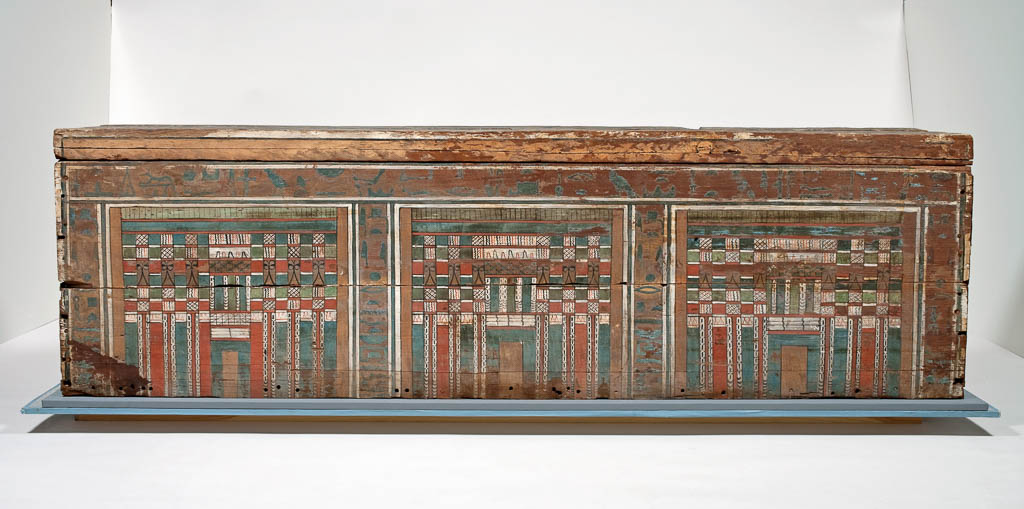
Painted coffin box with lid side view 1
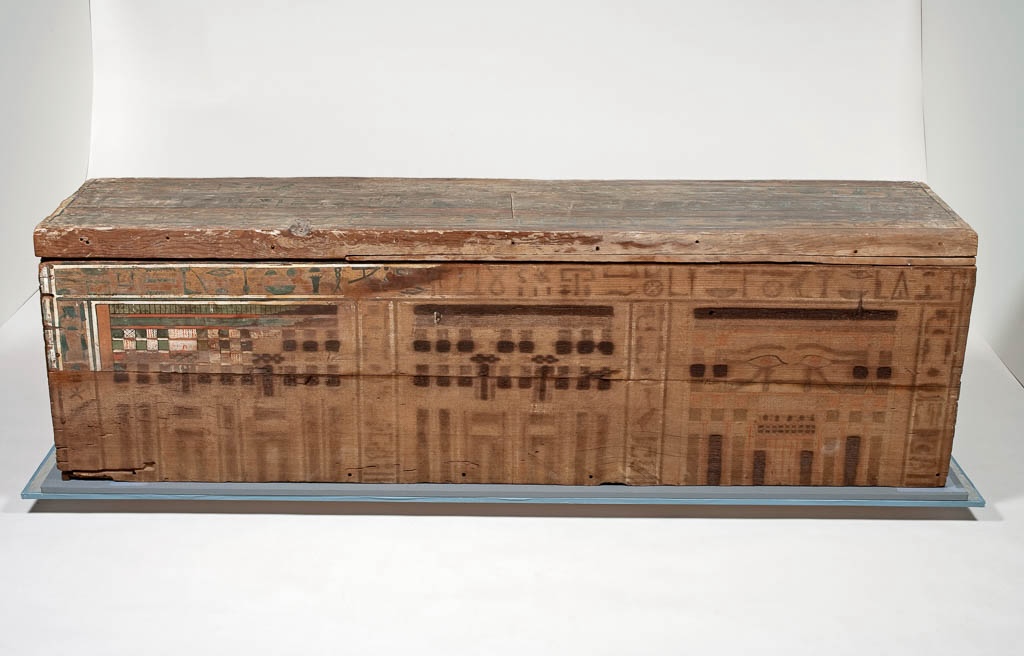
Painted coffin box with lid side view 2 decorated with an eye panel would have faced east. The wood and paint were damaged by water ingress into the tomb
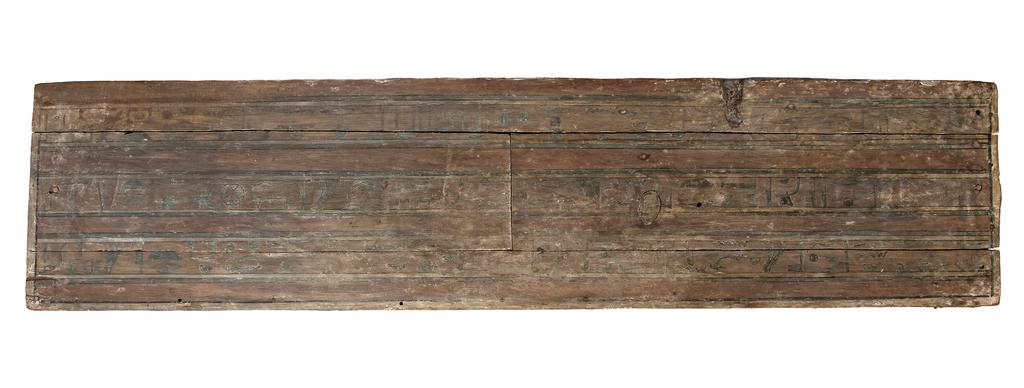
Painted coffin box lid top view
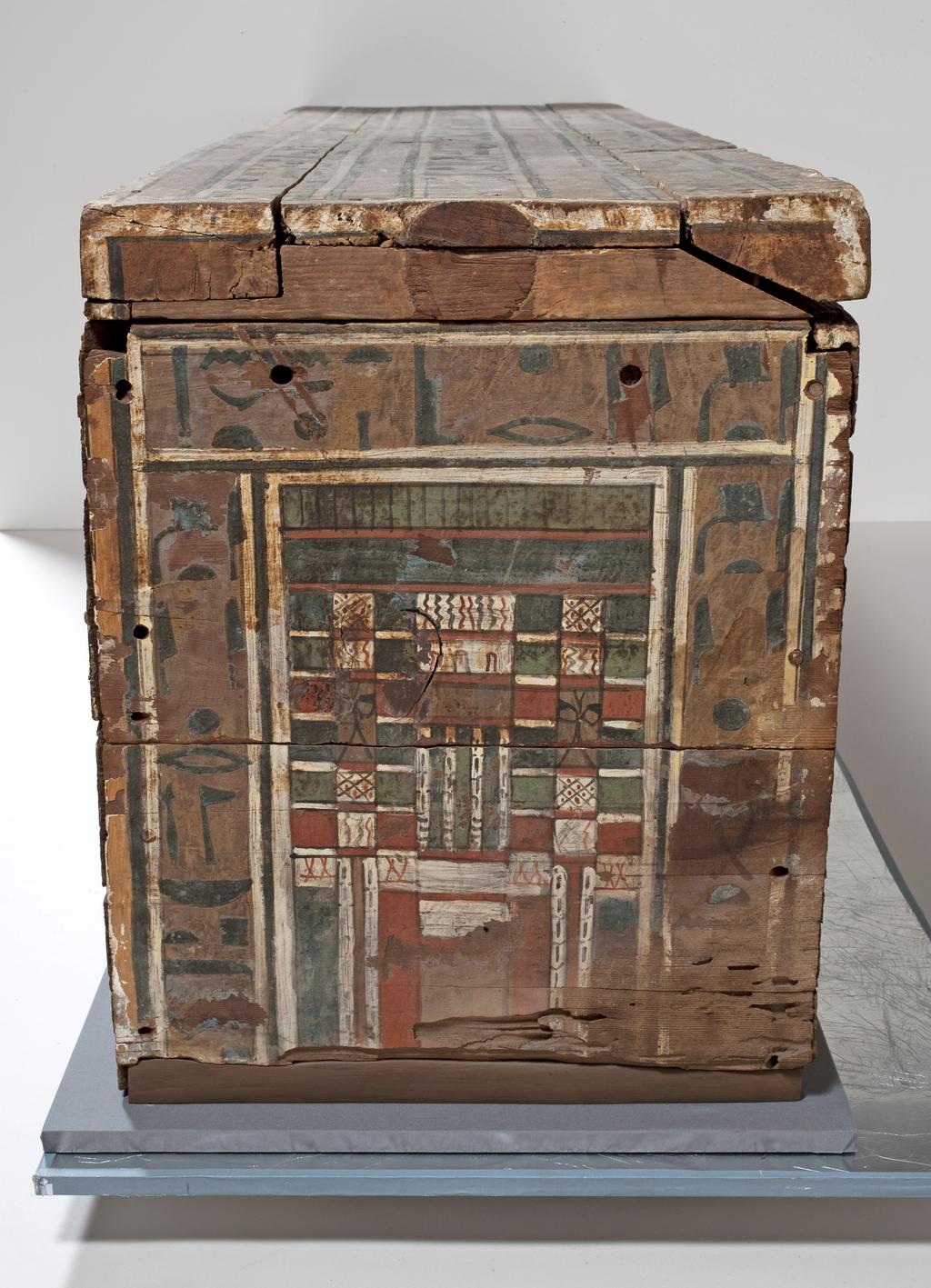
Foot end of the coffin Nakht
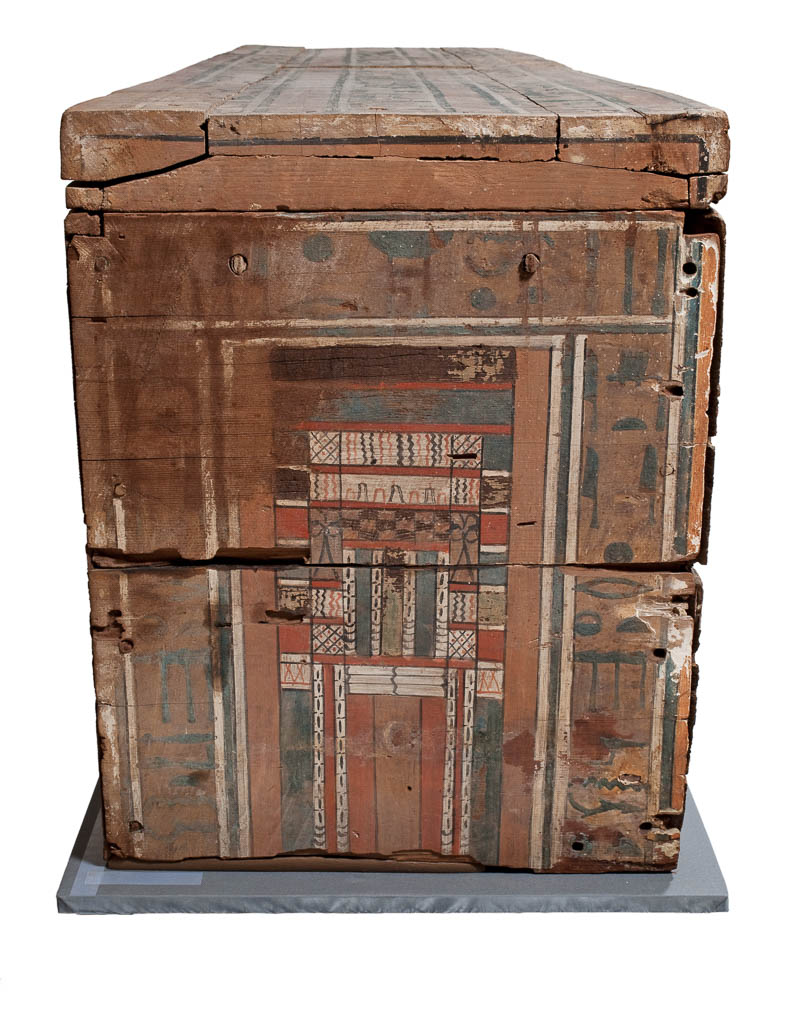
Head end of the coffin Nakht